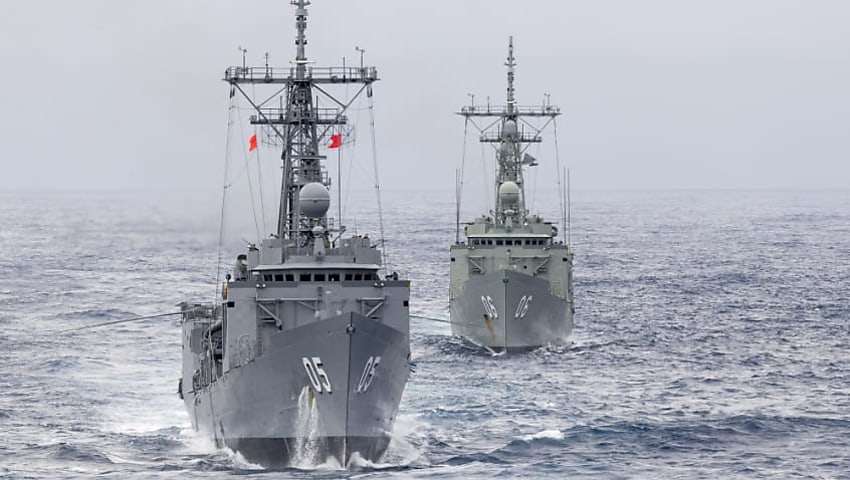Australia remains committed to implementing United Nations Security Council sanctions against North Korea, and will continue to work with partners to monitor and deter ship-to-ship transfers of sanctioned goods.
To continue reading the rest of this article, please log in.
Create free account to get unlimited news articles and more!
Defence is deploying a P-8A Poseidon maritime patrol aircraft to Japan, from where it will conduct maritime surveillance operations. As part of its current deployment to the region, HMAS Melbourne will also conduct surveillance patrols with international partners.
Since 2018, Australia has supported international efforts to deter and disrupt illicit trade and sanctions evasion activities by North Korea and its associated networks.
Last year, Australia deployed maritime patrol aircraft on three occasions, in April, September and December. Australia welcomes continued de-nuclearisation negotiations between the US and North Korea. These deployments support ongoing economic and diplomatic pressure on North Korea.
Australia, working with international partners, is committed to maintaining pressure on North Korea until it takes concrete steps towards complete, verifiable and irreversible de-nuclearisation.
HMAS Melbourne is currently undertaking a north-east Asia deployment and recently participated in China’s International Fleet Review in Qingdao.
HMAS Melbourne is an Adelaide Class guided missile frigate based on the US Navy's Navy Oliver Hazard Perry design. The first four ships were built in the US, with subsequent modifications undertaken in Australia. The last two were constructed in Australia with all modifications incorporated.
Each FFG ship is a long-range escort ship with roles including air defence, anti-submarine warfare, surveillance, interdiction and reconnaissance. The ship is capable of countering simultaneous threats from the air, surface and sub-surface.
These ships were the first RAN ships to be powered by gas turbine for the main propulsion and can be underway from cold in less than 30 minutes. Two forward mounted, retractable auxiliary propulsion units provide a secondary means of propulsion plus excellent manoeuvrability in confined waters.
The FFG's principal weapons are the Standard medium range anti-aircraft missile and the Harpoon anti-ship missile. A 76mm gun to counter both air and surface threats is fitted forward of the funnel and one 20mm Phalanx close-in-weapon system for anti-missile defence is located above the helicopter hangars.
For long range anti-submarine tasks, the FFG is equipped with a flight deck and hangars for two S-70B-2 Sea hawk helicopters. For close in anti-submarine defence, the ships are fitted with two Mk32 triple torpedo tubes.
The FFG's sensor package includes long-range radars for air and surface surveillance, electronic warfare surveillance sensors and a medium range sonar for the detection of submarines. A computer-based command and control system processes information as well as target data received by data link from other ships and aircraft.
Stephen Kuper
Steve has an extensive career across government, defence industry and advocacy, having previously worked for cabinet ministers at both Federal and State levels.

 Login
Login








